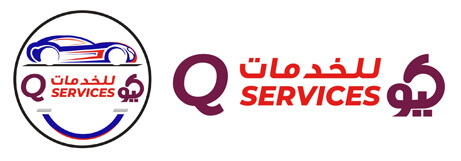When Should I Consider Having My Tyres Aligned and Balanced?
Maintaining your vehicle’s tyres is crucial for ensuring a safe and smooth driving experience. Among the essential tyre maintenance tasks, alignment and balancing are critical but often overlooked. Understanding when to have your tyres aligned and balanced can save you from potential hazards and costly repairs. This blog will explore the signs indicating the need for alignment and balancing, the benefits of these services, and how often you should consider them.
Understanding Tyre Alignment and Balancing
Tyre Alignment: Tyre alignment involves adjusting the angles of the wheels so that they are parallel to each other and perpendicular to the road. Proper alignment ensures that your vehicle drives straight and does not pull to one side. Misalignment can occur due to various reasons, such as hitting a pothole, curb, or general wear and tear.
Tyre Balancing: Tyre balancing, on the other hand, involves equalizing the weight distribution across all tyres and wheels. Balancing is done by adding small weights to the rim to correct any imbalance. This process prevents vibrations, ensures smooth driving, and extends tyre life.
Signs You Need Tyre Alignment
- Uneven Tyre Wear: One of the most obvious signs of misalignment is uneven tyre wear. If you notice that your tyres are wearing out more on one side than the other, it’s a clear indication that alignment is needed.
- Vehicle Pulls to One Side: If your vehicle tends to drift to the left or right when driving on a straight road, it suggests that your wheels are not properly aligned.
- Steering Wheel Off-Center: When your steering wheel is not centered while driving straight, it’s a sign that your alignment is off.
- Vibrating Steering Wheel: A vibrating steering wheel, especially at higher speeds, can indicate alignment issues or the need for balancing.
- Noisy Tyres: Unusual tyre noises, such as squealing or chirping, can be a sign of alignment problems.
Signs You Need Tyre Balancing
- Vibration in the Steering Wheel: If you feel a vibration in the steering wheel, particularly at certain speeds, it’s a strong indicator that your tyres are out of balance.
- Uneven Wear: Similar to misalignment, uneven tyre wear can also result from unbalanced tyres. However, the wear pattern may be different, often showing as scalloping or cupping.
- Increased Fuel Consumption: Unbalanced tyres can increase rolling resistance, leading to higher fuel consumption.
- Noise and Harshness: If you experience excessive noise or harshness while driving, it might be due to unbalanced tyres.
Benefits of Tyre Alignment and Balancing
- Improved Fuel Efficiency: Properly aligned and balanced tyres reduce rolling resistance, which can improve your vehicle’s fuel efficiency.
- Extended Tyre Life: Regular alignment and balancing help to ensure even tyre wear, which extends the life of your tyres.
- Enhanced Driving Comfort: Balanced tyres and proper alignment provide a smoother and more comfortable driving experience by reducing vibrations and ensuring the vehicle drives straight.
- Safety: Properly maintained tyres improve handling and braking, enhancing the overall safety of your vehicle.
- Cost Savings: By extending the life of your tyres and improving fuel efficiency, regular alignment and balancing can save you money in the long run.
How Often Should You Align and Balance Your Tyres?
Tyre Alignment: Most experts recommend having your tyres aligned at least once a year or every 12,000 miles, whichever comes first. However, you should consider an alignment check if you notice any of the signs mentioned above or after any significant impact, such as hitting a pothole or curb.
Tyre Balancing: Tyre balancing is generally recommended every 5,000 to 7,000 miles. It’s also advisable to balance your tyres whenever you replace them or if you notice signs of imbalance, such as vibrations or uneven wear.
The Impact of Qatar’s Climate on Tyre Maintenance
Qatar’s hot climate can exacerbate tyre wear and affect the alignment and balance of your tyres. The high temperatures can cause the air inside your tyres to expand, potentially leading to overinflation and uneven wear. Additionally, driving on hot roads can increase the risk of tyre damage and misalignment.
To counter these effects, it’s crucial to regularly check your tyre pressure and ensure it is maintained at the recommended level. Frequent inspections and timely alignment and balancing services are also essential to keep your tyres in optimal condition in Qatar’s harsh climate.
Conclusion
Regular tyre alignment and balancing are essential for maintaining your vehicle’s performance, safety, and comfort. By understanding the signs that indicate the need for these services and adhering to a regular maintenance schedule, you can ensure your tyres remain in top condition, providing you with a safe and smooth driving experience. In Qatar’s challenging climate, these practices become even more critical. Trust Qservices for professional tyre alignment and balancing services to keep your vehicle running efficiently and safely.


